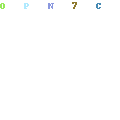How To Display Website Urls In A Print Book |
| How To Display Website Urls In A Print Book Posted: 19 Sep 2011 01:22 PM PDT One of the issues I had to deal with when I was assembling my self-published book, “The RESP Book” was how to deal with links. I wanted to include links to about a dozen sites. The way I put the links in the book was to display them as they are.  Link example
Right away you can see that one issue for the reader is that they have to type in that entire crazy url (accurately) in order to access the page. What a pain! For my second edition, I decided to try and improve on how I display the url links for various resources. Here are two good options for displaying link urls. 1 Using “tiny” urlsOne idea is to use one of those url shortener sites like “tinyurl” or “bitly” to shorten a long urn into a much shorter one. They can also be customized so that the “root” url is more recognizable. I got the “tiny” url idea from JD Roth, who used it in his excellent money book “Your Money:The Missing Manual“. I asked JD if he received any negative feedback about the tiny urls and this is what he said:
By “root domain”, JD is referring to a basic web address such as vanguard.com. There isn’t much point in making a tiny url out of such a simple address. 2 Using a “link” pageWhat I decided to do instead, was to create a link page on my blog. Here is the link page for The RESP Book: http://www.moneysmartsblog.com/resp-book-links/ The way it works is that inside the book, I write the following when I want to link to a resource:  How it looks in the book (minus the underlining) Once the reader calls up the link page, they just have to locate the proper header (in alphabetical order) and then click on the link provided.  Section of my RESP Book links page The benefits of a link page
I created the link page on my main blog. You could also put a link page on an author blog ie MikeHolman.com or on a website dedicated to a specific book ie TheRESPBook.com. What do you think of these methods? Would you use one of them or do you prefer some other method? |
| You are subscribed to email updates from Blogthority To stop receiving these emails, you may unsubscribe now. | Email delivery powered by Google |
| Google Inc., 20 West Kinzie, Chicago IL USA 60610 | |

No comments:
Post a Comment